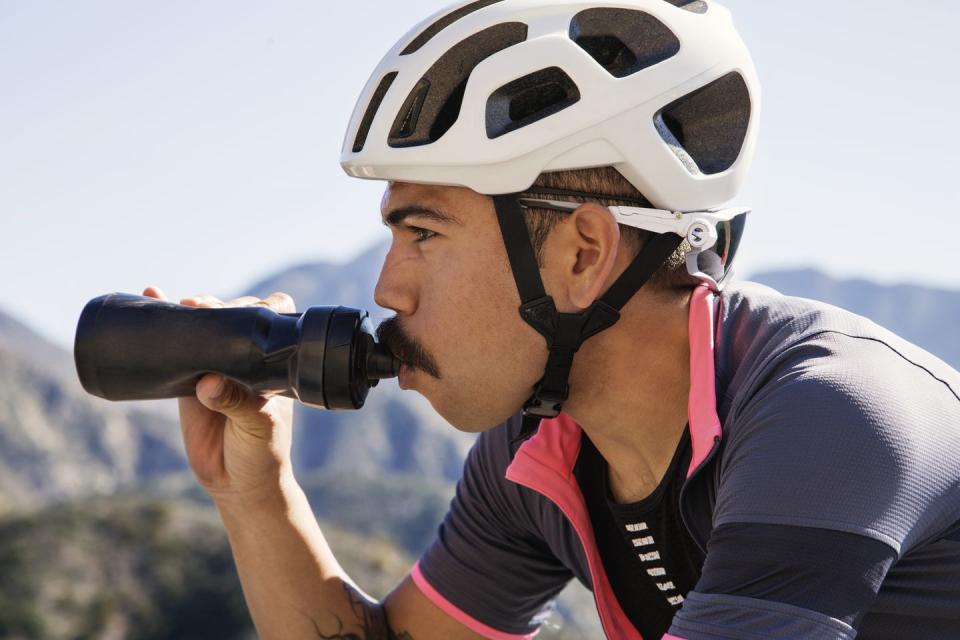These 6 Signs Show That You're Ready to Take on a Century Ride

Watching the mileage on your cycling computer tick over to triple digits is one of the most satisfying benchmarks in our sport. Yet like all high marks, doing a century ride doesn’t come easily; hitting a hundred miles in a single outing puts your fitness, skills, and general cycling know-how to the test.
And if you’ve been riding more during the COVID-19 pandemic, getting closer to that elusive century ride mark might be just what you need to stay motived. Here are six signs that you’re good to go…and make it to the finish.
You’ve Clocked at Least 4:30 to 5:00 Hours in the Saddle

More than 20 years of endurance (and ultra endurance) cycling has taught me that the fifth hour into an event is the hour of reckoning, where any errors in fit, pacing, hydration, nutrition, and so forth will rear their ugly heads. Unless the 100 miler you’re gunning for is pancake flat and you can easily cruise at 20+ mph (in which case you can adjust that max time downward), a rolling century will take you 6 ? to 7 hours (using 15 mph as an average). Working up to at least one ride of at least 5 hours will allow you to practice everything you need to know and give you confidence on event day.
You Can Assume—and Hold—Your Riding Position

Any little tweak that you feel after a few hours in the saddle will become a nagging pain once you hit the 5 hour mark and beyond. If you have a century in your sights, be sure to address any “little” fit issues like neck pain or back aches, knee twinges, and numb hands or feet, because they’ll only become more pronounced as the miles wear on. Research shows that your upper body plays a significant role in not just supporting your weight as you ride, but also in generating power as you pedal. Strengthening the supporting muscles in your core, shoulders, and arms can help eliminate pain and fatigue, improving your endurance overall.
Your Fueling Is Dialed

Nothing sidelines an otherwise successful century like bonking or a raging case of rot gut (nausea generally from too much sugar). First time 100 mile riders often fail to eat enough early in the event because they’re excited and don’t feel hungry…until suddenly their energy levels sputter like a car on fumes. Same goes for taking in adequate fluids to stave off overheating and dehydration, both of which can sneak up on you after 4 or 5 hours of riding. Practice in your training to nail your nutrition and hydration.
On long training rides, aim to get about 200 calories an hour from simple foods like bananas, figs, and energy bars. Make it a goal to drain one 20 to 24 ounce bottle of sports drink an hour.
You’re Prepared for Anything

One of my first centuries nearly cured me of centuries. It was the Santa Fe Century in Gainesville, Florida, which climbs just 1,000 feet over more than 100 miles. I live in Pennsylvania where we climb that much in every 10 to 20 miles whether we want to or not. Forty miles in, everything hurt from being planted in the saddle hammering the flats without a break in position.
If you’re staying local, you’re likely ready for the terrain you’ll encounter just by training in the area. If you’re traveling somewhere new for your century, do a little research and try to simulate what you’ll find in your rides leading up to it.
You’re Comfortable in a Crowd

Most organized centuries start out as a rolling mob, and no matter where you position yourself at the start, you’re bound to find yourself pedaling in a pack or paceline of unfamiliar faces at least until the ride thins out. Being comfortable riding with others—as well as being able to identify what wheels to follow and what wheels to steer clear of—will help ease your nerves and make that first century far more enjoyable.
You're *Really* Prepared for Anything

Flat tires, missed turns, lost riding mates, incoming storms…lots can happen in 100 miles. Have a plan for what you’ll do should common mishaps (like going off course or suffering a mechanical) happen out there. At the very least, do yourself a favor and practice fixing a flat before your big ride.
You Might Also Like
